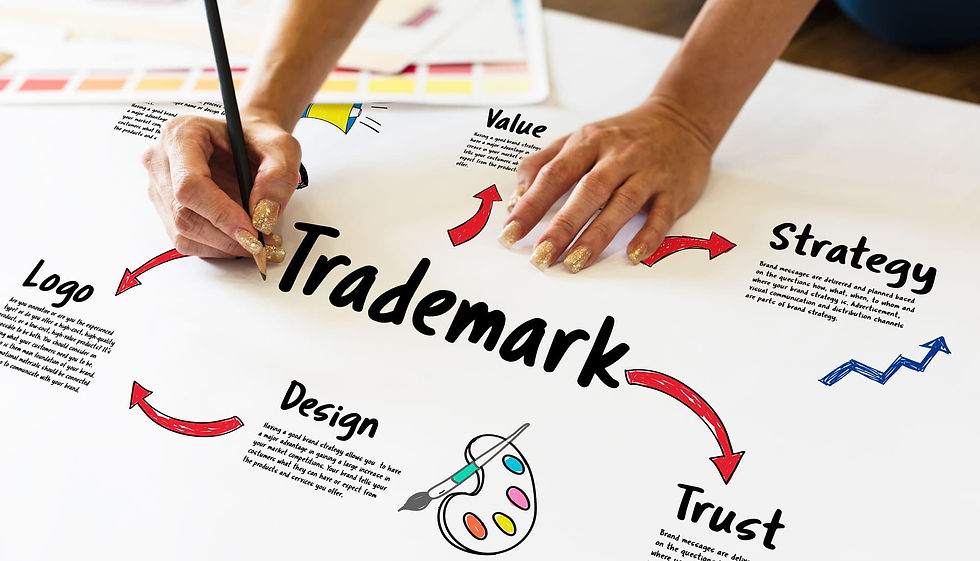Understanding Copyright on Video Platforms: A Guide for Content Creators
- morrisyiu5
- Apr 24
- 4 min read

In the digital age, content creation has become more accessible than ever. With platforms allowing users to upload videos, share ideas, and express creativity, the potential for reaching a global audience is immense. However, with this opportunity comes the responsibility of understanding copyright laws and how they affect your content. In this blog post, we will explore the intricacies of copyright on video platforms, the implications for content creators, and how to navigate potential copyright issues effectively.
The Basics of Copyright
Copyright is a legal framework that protects original works of authorship, including videos, music, and written content. When you create something original, you automatically hold the copyright to that work, granting you exclusive rights to use, distribute, and modify it. This protection is crucial for content creators, as it ensures that their hard work cannot be used without permission.
What Happens When Copyright is Violated?
When someone uploads your content without your permission, it constitutes a copyright infringement. This can lead to significant consequences for the infringer, including the removal of the content and potential legal action. As a content creator, it’s essential to understand your rights and the steps you can take if someone misuses your work.
The Role of Content ID
One of the most significant tools for managing copyright on video platforms is Content ID. This system automatically scans uploaded videos for copyrighted material and matches them against a database of registered works. If a match is found, the copyright owner can choose to block the video, monetize it, or track its viewership statistics.
How Content ID Works
When you upload a video, the platform analyzes the audio and visual components to identify any copyrighted material. If your video contains content that matches another creator's work, the system will trigger a copyright claim. This can be frustrating for creators who may have used a small clip or sample under the fair use doctrine, which allows limited use of copyrighted material for commentary, criticism, or educational purposes.
Navigating Copyright Claims
If you find yourself facing a copyright claim, it’s essential to know your options. Here are the primary steps you can take:
1. Review the Claim
First, carefully review the details of the copyright claim. Understand what specific content has been flagged and the reason for the claim. This will help you determine your next steps.
2. Dispute the Claim
If you believe the claim is unjust, you can file a dispute. This process allows you to challenge the copyright claim, asserting that your use of the material falls under fair use or that you have permission to use it. Be prepared to provide evidence supporting your case.
3. Remove or Edit the Content
If the claim is valid, you may need to remove the infringing content or edit your video to comply with copyright laws. This can be a time-consuming process, but it’s crucial to protect your channel and avoid further penalties.
4. Seek Legal Advice
In complex cases, it may be beneficial to consult with a legal professional who specializes in copyright law. They can provide guidance tailored to your specific situation and help you navigate the intricacies of copyright claims.
The Importance of Fair Use
Understanding the concept of fair use is vital for content creators. Fair use allows for limited use of copyrighted material without permission under certain circumstances. This includes:
Commentary and Criticism: Using clips to critique or comment on the original work.
Educational Purposes: Incorporating material for teaching or educational content.
Parody: Creating a humorous or satirical take on the original work.
However, fair use is not a blanket exemption and is determined on a case-by-case basis. Factors such as the purpose of use, the nature of the copyrighted work, the amount used, and the effect on the market value of the original work are all considered.
Protecting Your Own Content
As a content creator, it’s not only essential to understand copyright laws but also to protect your own work. Here are some strategies to safeguard your content:
1. Register Your Work
While copyright protection is automatic upon creation, registering your work with the appropriate copyright office can provide additional legal benefits, including the ability to sue for statutory damages in case of infringement.
2. Use Watermarks
Adding a watermark to your videos can deter others from using your content without permission. It serves as a visual reminder of ownership and can help establish your brand identity.
3. Educate Your Audience
Inform your viewers about copyright laws and the importance of respecting creators' rights. This can foster a community that values original content and discourages infringement.
Conclusion
Navigating the world of copyright can be challenging for content creators, but understanding the basics can empower you to protect your work and respect the rights of others. By familiarizing yourself with copyright laws, utilizing tools like Content ID, and knowing how to respond to claims, you can create confidently and responsibly.
As you continue to produce content, remember that your creativity deserves protection. Stay informed, advocate for your rights, and contribute to a culture that values originality and respect in the digital landscape. By doing so, you not only safeguard your work but also support a thriving community of creators.




Comments